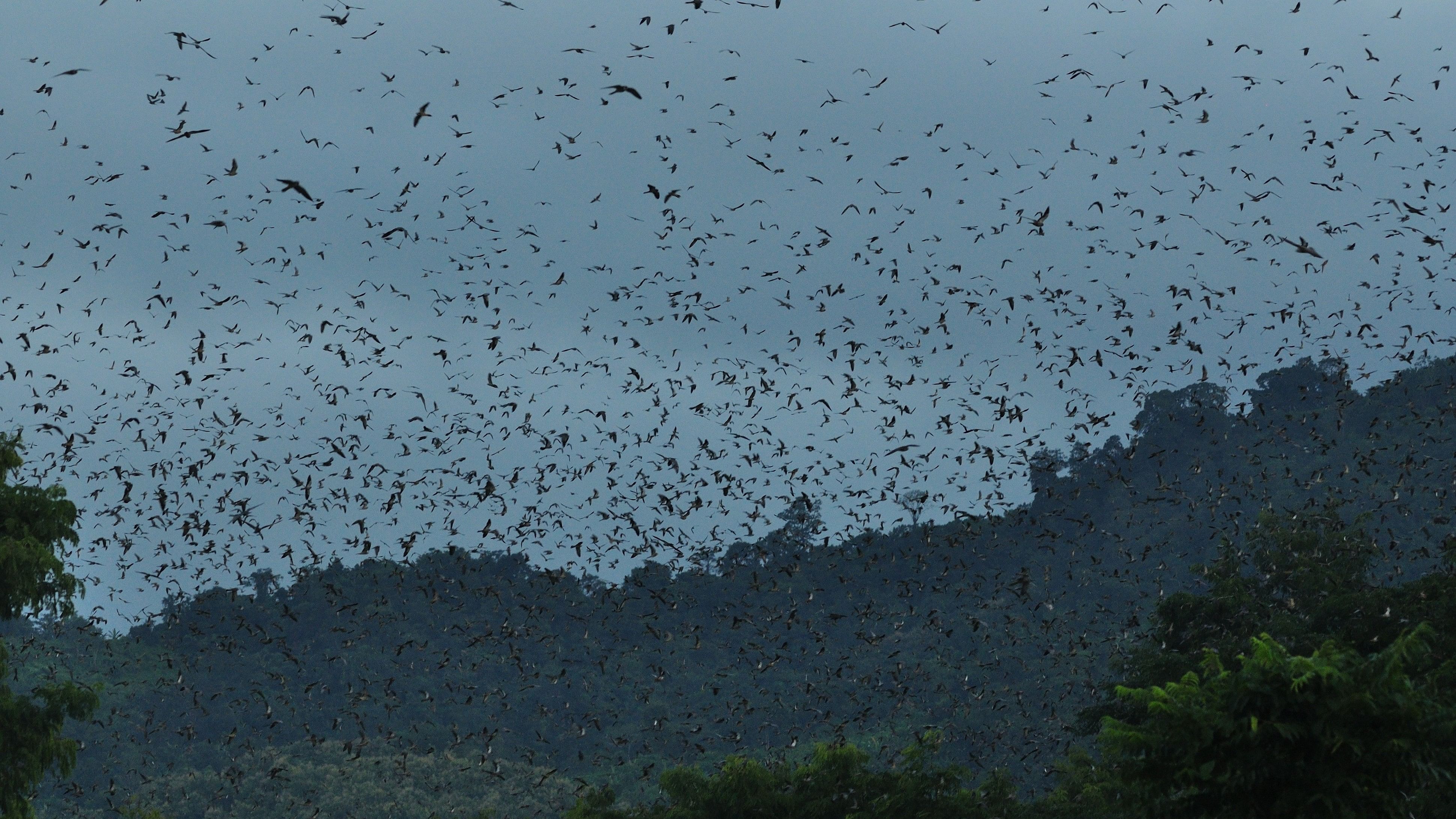
Amur falcons move across Asia and congregate in Nagaland. Protection is required across their distribution range to stop their poaching.
Credit: Author
Protected areas (PAs) are a widespread method of conserving biodiversity globally. The definition of a PA and the level of protection vary widely. Typically, PAs are envisioned as inviolate areas designed to protect one or more charismatic species, such as the tiger or the elephant.
Conceptually, the protected areas should be interconnected so flora and fauna can move across them. This becomes a challenge when PAs are established in fragmented landscapes or when only a part of the landscape is protected.
Asia is a hotspot for biodiversity, with many countries sharing borders. Nearly 82% of threatened species are found in transboundary areas of Asia. Yet, only 22% of such habitats are protected. The snow leopards in the Himalayan Mountains are distributed across 12 countries. Conserving them would require a collective effort in all or most countries where the animal is found.
However, the numbers do not look good for Asia, especially in PAs away from international borders. This is one of the most densely populated areas of the world. Many studies have shown that forested landscapes, including PAs, are impacted by human activity such as agriculture expansion or development projects. Given the impending impacts of climate change, species living in large geographic areas, often in remote and hostile environments, are going to be increasingly threatened.
In a recent study, a team of researchers from the University of Oxford led by Vignesh Kamath explored the possibility of enhancing connectivity or establishing newer transboundary conservation areas in Asia. They began by examining if the extent of PAs changes as one moves away from the terrestrial international borders of 42 countries.
Using data from the World Database on Protected Areas, they found that the size of PAs declines as one moves away from the border, and any variation seen in the area is a function of the country.
This means that some countries have larger PAs closer to the border, and some others have smaller, but typically, PAs in all countries reduce in size as one moves away from the border.
They also found that PAs are nearly thrice as close to each other near the border as those away from it. This finding indicates that PAs near borders are closer to those in neighbouring countries than to those within the same country. This is an important finding for policymakers in countries with shared borders to notice and work towards setting up transboundary conservation areas.
Vignesh Kamath, the lead author of the paper published in the journal Frontiers for Conservation Science was set to go to Kenya for fieldwork during the Covid pandemic, but got stuck at Oxford. Then, he began to envy wildlife and their ability to move freely across borders.
“Conservation policies and initiatives are increasingly being confined within national boundaries. This misalignment threatens biodiversity and overlooks the potential of transborder conservation initiatives to foster peace among regional conflicts, particularly prevalent in Asia,” he adds.
Subsequently, he began to work on transboundary issues in Asia with his advisor, Prof. Mohammad Farhadinia, using remotely sensed satellite images and gathering information on publicly available databases. While focusing on the feasibility of establishing transboundary conservation areas, they also examined habitat loss within protected areas across Asia.
From 2011 to 2019, the forest cover declined inside protected areas of many Asian countries, including India, but was neutral or even improved in other countries, such as Bhutan and Bangladesh.
Vignesh hopes that this work will trigger collaborative conservation efforts that safeguard species and serve as a diplomatic tool to bridge divides between neighbouring Asian countries and perhaps elsewhere.
Threatened wildlife, especially those distributed across large geographic areas, would not particularly benefit from small or fragmented PAs.
Protecting only a part of a species’ geographic range in one country does not bode well for conservation. Recently, over 190 countries have ratified the recent Kunming-Montreal protocol. Popularly dubbed ‘30 by 30’, the countries have agreed to protect 30% of their landmass by 2030. This could provide a useful framework to expand the PAs near borders to include community-protected landscapes under a criteria called Other Effective area-based Conservation Measures (OECMs).
The concept of nationhood or national boundaries means nothing to wildlife, and they roam free. While there are examples of transboundary conservation areas being established globally, little progress is seen in Asia. Perhaps it is time for policymakers across Asian countries to find inspiration from what the explorer Thor Heyerdahl, who sailed on a raft across the Pacific Ocean, famously said, “Borders? I have never seen one, but I have heard they exist in some people’s minds.”
(The author is an ecologist and a faculty at ATREE)